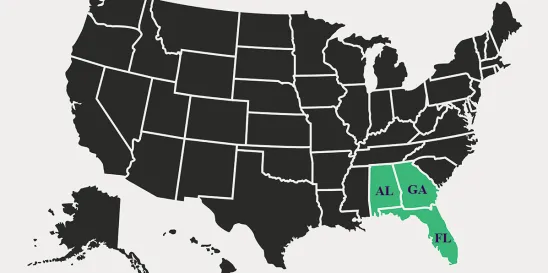Courts scrutinize a complaint’s factual allegations to decide whether the allegations trigger a duty to defend.[1] If the facts unambiguously exclude coverage, there is no duty to defend.[2] But what if the factual allegations fall within a policy exclusion, but the allegations are untrue or questionable? What if the true facts would mean the exclusion doesn’t apply? In that case, many courts have found that the insurer should base its decision on the policyholder’s version of the “true facts.” [3] An insurer can’t rely on the complaint’s allegations to deny coverage when the facts that the insurer knows or can ascertain show that the claim is covered. [4]
A recent case, United Minerals & Properties Inc. v. Phoenix Insurance Co., No. 4:23-cv-00050 (N.D. Ga.), illustrates these policy interpretation principles.
In the underlying case, a plaintiff alleged that his mesothelioma resulted from a medical procedure that used talc mined by United Minerals and Properties, Inc. d/b/a CIMBAR Performance Minerals, Inc. (CIMBAR). The talc, according to the plaintiff, contained asbestos.
Not true, said CIMBAR. Test results from an independent laboratory showed that its talc had no asbestos, so it couldn’t have caused the plaintiff’s mesothelioma. CIMBAR’s insurer, Phoenix, denied coverage anyway, citing the plaintiff’s allegation that the talc contained asbestos to invoke the policies’ asbestos exclusions. The exclusions barred coverage for bodily injury arising out of the actual or alleged presence of asbestos if the bodily injury “is caused or contributed to by the hazardous properties of asbestos.”
The court did not agree that the exclusions applied—at least not yet. The court focused on the exclusions’ second clause: that the exclusions apply as long as the bodily injury “is caused by or contributed to by the hazardous properties of asbestos.” The court explained that “[t]he presence of the word ‘is’ in this clause implies that the asbestos must be present for the exclusion to apply.” CIMBAR said that asbestos wasn’t present, and so the court ordered Phoenix to defend CIMBAR in the underlying suit despite the plaintiff’s allegations. [5]
When an insurer denies coverage, the denial letter usually invites the policyholder to correct any inaccuracies in the letter. Policyholders should do so, because it may change the insurer’s position (or a court may do it for them!).
[1] Hoover v. Maxum Indem. Co., 730 S.E.2d 413, 418 (Ga. 2012).
[2] Penn-Am. Ins. Co. v. Disabled Am. Veterans, Inc., 490 S.E.2d 374, 376 (Ga. 1997).
[3] Colonial Oil Industries, Inc. v. Underwriters Subscribing to Pol’y Nos. TO21504670 & TO31504671, 491 S.E.2d 337, 338 (Ga. 1997).
[4] JLM Enterprises, Inc. v. Houston Gen. Ins. Co., 196 F. Supp. 2d 1299, 1304 (S.D. Ga. 2002) (“Under such circumstances, an insurer has a duty to conduct a reasonable investigation into the insured’s contentions, and if the investigation reveals facts arguably placing the claim within the policy coverage, then the insurer would have a duty to defend.”); see also Anderson v. So. Guar. Ins. Co., 508 S.E.2d 726, 729 (Ga. App. 1998) (“If the true facts are known or ascertainable to the insurer at the outset, then the insurer is obligated to defend the suit, just as if the complaint against the insured falsely alleged coverage.”).
[5] The court did not explain what would happen if the underlying case eventually revealed that the talc did contain asbestos.





 />i
/>i
